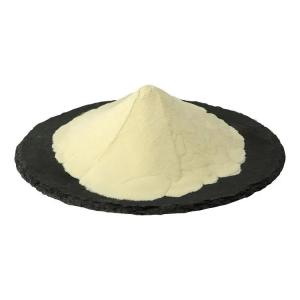News list
News Center
Hot Product
News
Food safety research on phosphoric acid use
Time:2025-10-20
1. Introduction
Phosphoric acid is an important ingredient in modern food manufacturing, valued for its roles in acidity regulation, preservation, and flavor enhancement. As food safety standards continue to evolve, researchers have placed growing emphasis on evaluating the safety and regulatory implications of phosphoric acid use. Food safety research in this area aims to ensure that its applications in the food industry remain within scientifically supported and health-conscious limits.
2. Chemical Profile and Industrial Role
Phosphoric acid (H₃PO₄) is a colorless, odorless, and moderately strong inorganic acid composed of phosphorus, oxygen, and hydrogen. It is highly soluble in water and stable under standard conditions. In food processing, it functions as an acidity regulator, pH stabilizer, and flavoring agent, commonly found in beverages, dairy products, processed meats, and bakery items. Its ability to maintain microbial control and enhance taste has made it a key additive in global food production.
3. Safety Assessment and Regulatory Standards
Food safety authorities, including the U.S. Food and Drug Administration (FDA) and the European Food Safety Authority (EFSA), classify phosphoric acid as “generally recognized as safe” (GRAS) when used within prescribed limits. Research in food toxicology has shown that low to moderate dietary exposure poses minimal health risks. However, ongoing monitoring and evaluation are necessary to assess cumulative intake, particularly from processed foods and beverages where phosphoric acid or phosphate salts are frequently added.
4. Toxicological and Metabolic Research Findings
Toxicological studies on phosphoric acid focus on its potential effects on mineral metabolism and systemic pH balance. While phosphorus is an essential nutrient, excessive intake from inorganic sources can disrupt the calcium-to-phosphorus ratio, potentially affecting bone mineralization. Research also explores how different forms of phosphate additives are absorbed and metabolized, helping to refine safety thresholds and inform future regulatory updates.
5. Technological Applications and Safe Formulation
In food technology, researchers are exploring ways to optimize phosphoric acid use to enhance safety and sustainability. Studies focus on the development of precision dosing systems, alternative acidulants, and improved formulation strategies that minimize unnecessary additive use. The goal is to maintain product quality and shelf stability while reducing potential nutritional imbalances caused by overexposure to phosphate additives.
6. Environmental and Quality Considerations
Food safety research also extends to environmental and product quality dimensions. Excess phosphorus from food processing waste can contribute to water pollution and eutrophication, leading to increased regulatory attention on waste management and cleaner production. At the same time, maintaining high product quality standards ensures that phosphoric acid’s inclusion does not compromise the sensory or nutritional properties of food products.
7. Conclusion
Research on phosphoric acid in the context of food safety highlights the importance of balanced use, scientific monitoring, and regulatory compliance. As an approved and useful additive, phosphoric acid contributes significantly to modern food processing, yet responsible application remains crucial. Continued studies in toxicology, nutrition, and sustainable formulation will ensure that its use aligns with global food safety goals and supports both public health and industry innovation.
Phosphoric acid is an important ingredient in modern food manufacturing, valued for its roles in acidity regulation, preservation, and flavor enhancement. As food safety standards continue to evolve, researchers have placed growing emphasis on evaluating the safety and regulatory implications of phosphoric acid use. Food safety research in this area aims to ensure that its applications in the food industry remain within scientifically supported and health-conscious limits.
2. Chemical Profile and Industrial Role
Phosphoric acid (H₃PO₄) is a colorless, odorless, and moderately strong inorganic acid composed of phosphorus, oxygen, and hydrogen. It is highly soluble in water and stable under standard conditions. In food processing, it functions as an acidity regulator, pH stabilizer, and flavoring agent, commonly found in beverages, dairy products, processed meats, and bakery items. Its ability to maintain microbial control and enhance taste has made it a key additive in global food production.
3. Safety Assessment and Regulatory Standards
Food safety authorities, including the U.S. Food and Drug Administration (FDA) and the European Food Safety Authority (EFSA), classify phosphoric acid as “generally recognized as safe” (GRAS) when used within prescribed limits. Research in food toxicology has shown that low to moderate dietary exposure poses minimal health risks. However, ongoing monitoring and evaluation are necessary to assess cumulative intake, particularly from processed foods and beverages where phosphoric acid or phosphate salts are frequently added.
4. Toxicological and Metabolic Research Findings
Toxicological studies on phosphoric acid focus on its potential effects on mineral metabolism and systemic pH balance. While phosphorus is an essential nutrient, excessive intake from inorganic sources can disrupt the calcium-to-phosphorus ratio, potentially affecting bone mineralization. Research also explores how different forms of phosphate additives are absorbed and metabolized, helping to refine safety thresholds and inform future regulatory updates.
5. Technological Applications and Safe Formulation
In food technology, researchers are exploring ways to optimize phosphoric acid use to enhance safety and sustainability. Studies focus on the development of precision dosing systems, alternative acidulants, and improved formulation strategies that minimize unnecessary additive use. The goal is to maintain product quality and shelf stability while reducing potential nutritional imbalances caused by overexposure to phosphate additives.
6. Environmental and Quality Considerations
Food safety research also extends to environmental and product quality dimensions. Excess phosphorus from food processing waste can contribute to water pollution and eutrophication, leading to increased regulatory attention on waste management and cleaner production. At the same time, maintaining high product quality standards ensures that phosphoric acid’s inclusion does not compromise the sensory or nutritional properties of food products.
7. Conclusion
Research on phosphoric acid in the context of food safety highlights the importance of balanced use, scientific monitoring, and regulatory compliance. As an approved and useful additive, phosphoric acid contributes significantly to modern food processing, yet responsible application remains crucial. Continued studies in toxicology, nutrition, and sustainable formulation will ensure that its use aligns with global food safety goals and supports both public health and industry innovation.


 CN
CN





